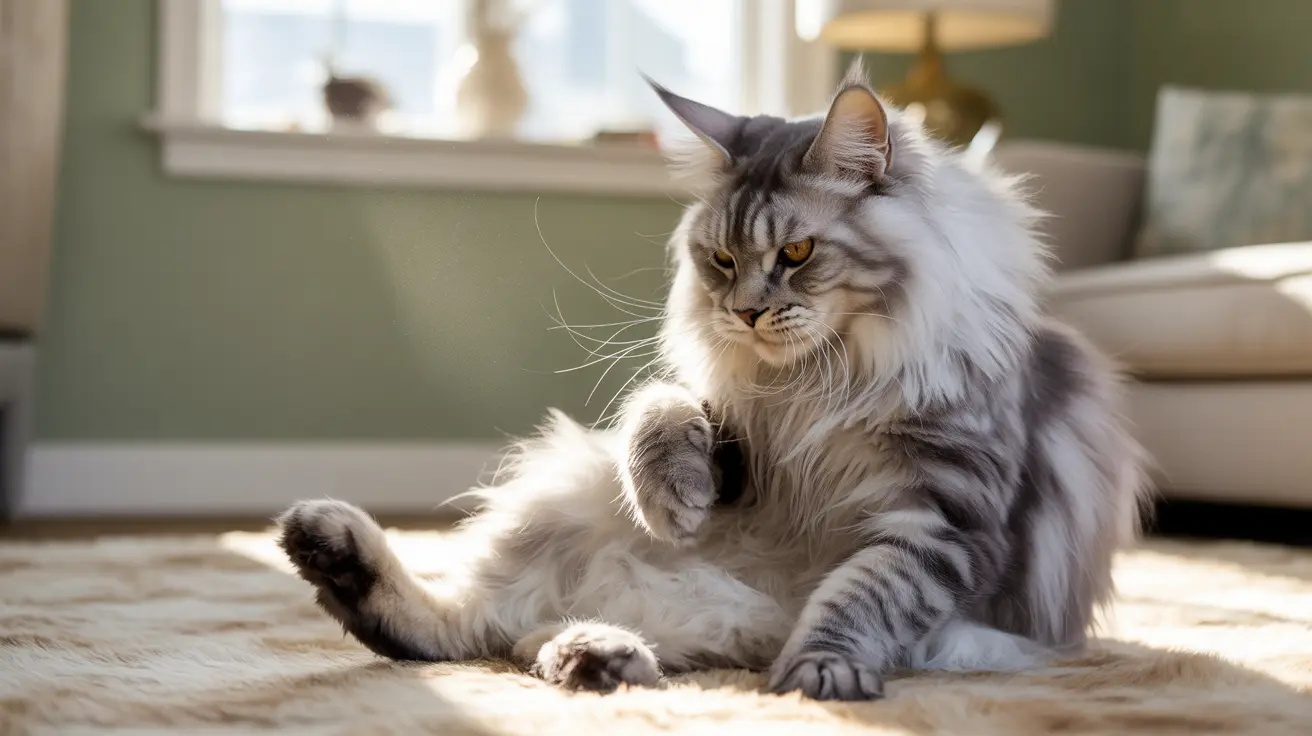If you've ever been groomed by your feline friend, you've experienced the distinctive sandpaper-like sensation of their tongue. This unique characteristic isn't just a quirky feature - it's a remarkable evolutionary adaptation that serves multiple crucial functions in your cat's daily life.
From maintaining their pristine coat to helping them eat and drink efficiently, your cat's rough tongue is a testament to nature's ingenious design. Let's explore the fascinating science behind this distinctive feline feature and understand why it's so important for your cat's wellbeing.
The Amazing Structure of Your Cat's Rough Tongue
Your cat's tongue is covered in tiny, backward-facing barbs called papillae. These hook-like projections are made of keratin - the same tough protein found in their claws and your fingernails. Each papilla is curved and flexible, functioning like hundreds of tiny combs working in perfect harmony.
The tongue features four distinct types of papillae, each serving specific purposes:
- Filiform papillae: The most numerous type, creating the rough texture
- Fungiform papillae: Mushroom-shaped structures containing taste buds
- Foliate papillae: Leaf-shaped projections on the sides
- Vallate papillae: Large, dome-shaped structures at the back of the tongue
Essential Functions of Your Cat's Rough Tongue
Grooming and Coat Maintenance
Your cat's rough tongue is their primary grooming tool, designed to penetrate multiple layers of fur down to the skin. During grooming, which occupies up to 50% of their day, the papillae help distribute natural oils throughout the coat, remove dirt and loose fur, and maintain optimal skin health.
Feeding and Hunting
The backward-facing barbs are perfectly designed for stripping meat from bones and handling prey efficiently. Even if your cat is strictly an indoor pet, they retain this ancestral adaptation that makes eating more effective.
Drinking Mechanism
The rough texture of your cat's tongue enables them to drink water with remarkable efficiency. They can lap up liquid at speeds of up to four times per second, creating a column of water that they capture before gravity pulls it down.
Health and Behavioral Significance
A healthy cat's tongue should be pink and moist. Changes in color, texture, or grooming behavior might indicate underlying health issues. While regular grooming is normal and beneficial, excessive licking could signal stress or medical problems requiring veterinary attention.
The rough tongue also plays a crucial role in temperature regulation. When cats groom themselves, the saliva evaporating from their coat helps cool them down, making their tongue an important part of their thermal regulation system.
Frequently Asked Questions
Why does my cat's tongue feel so rough and sandpaper-like?
Your cat's tongue feels rough because it's covered in tiny, backward-facing barbs called papillae. These keratin spines are essential for grooming, feeding, and drinking.
How do the tiny spines (papillae) on my cat's tongue help with grooming and feeding?
The papillae act like a natural comb, reaching deep into the fur to remove dirt, distribute oils, and detangle knots. During feeding, they help grip and pull food into the mouth efficiently.
Can the rough texture of a cat's tongue cause any health problems or indicate illness?
While the rough texture itself is normal, changes in tongue appearance or excessive licking can indicate health issues. Watch for changes in color, unusual dryness, or compulsive licking behaviors.
Why do cats use their rough tongues to lick water and how does it help them drink?
The rough texture helps cats create a column of water when they lap at high speeds. Their unique drinking mechanism allows them to efficiently draw water into their mouths before gravity pulls it back down.
How does my cat's rough tongue contribute to temperature regulation and overall cleanliness?
The grooming process spreads saliva through the fur, which cools cats as it evaporates. The rough tongue also helps distribute natural oils and remove dirt, maintaining optimal coat health and cleanliness.
Understanding your cat's unique tongue structure helps you better appreciate this remarkable feature of feline anatomy. By monitoring your cat's grooming habits and tongue health, you can ensure they maintain their natural cleaning abilities while staying alert to any potential health concerns.






